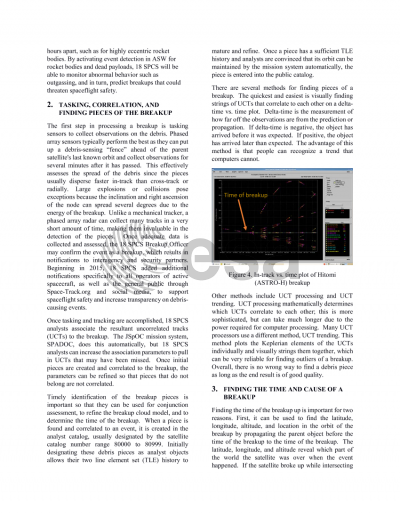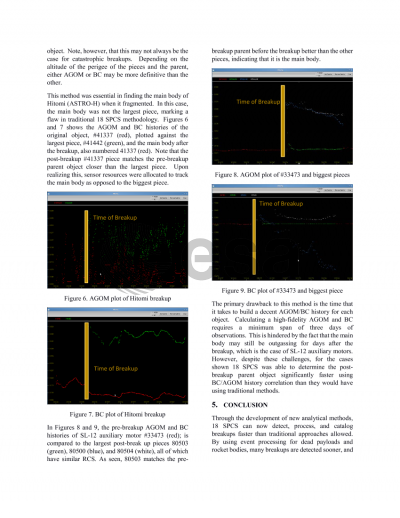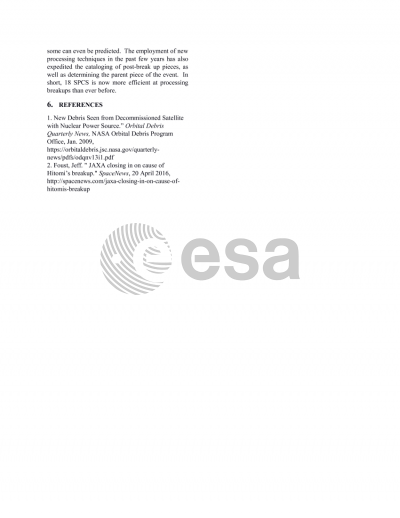Document details

Abstract
The 18th Space Control Squadron (18 SPCS) has created new techniques to predict, detect, process, and catalog breakups. It has done so on behalf of Air Force Space Command, in support of U.S. Strategic Command’s Joint Functional Component Command for Space, which is charged with executing USSTRATCOM’s Presidentially-assigned Space Operations mission area. This paper presents the process of predicting propulsion system-related breakups through the detection of outgassing, which has led to the successful prediction of the breakup of a rocket body. 18 SPCS methods for tasking, correlating uncorrelated tracks (UCTs), and finding breakup pieces are shown. Also presented are existing and new approaches to finding the time and location of a breakup, which assists in determining the cause. Finally, we explore a new method for determining the parent piece of a breakup, which was essential in finding the main body of an active payload and six rocket bodies in past breakup events. These methods have optimized breakup processing and increased the responsiveness of 18 SPCS.
Preview







